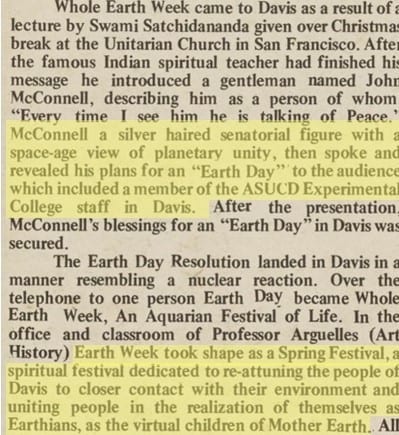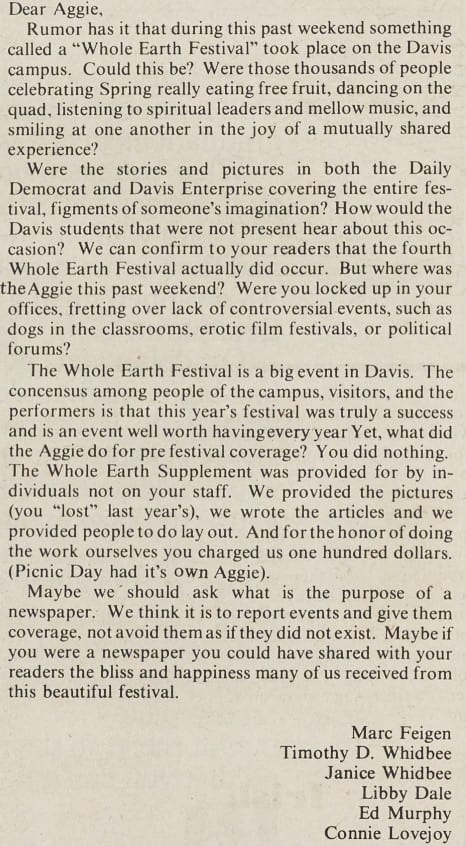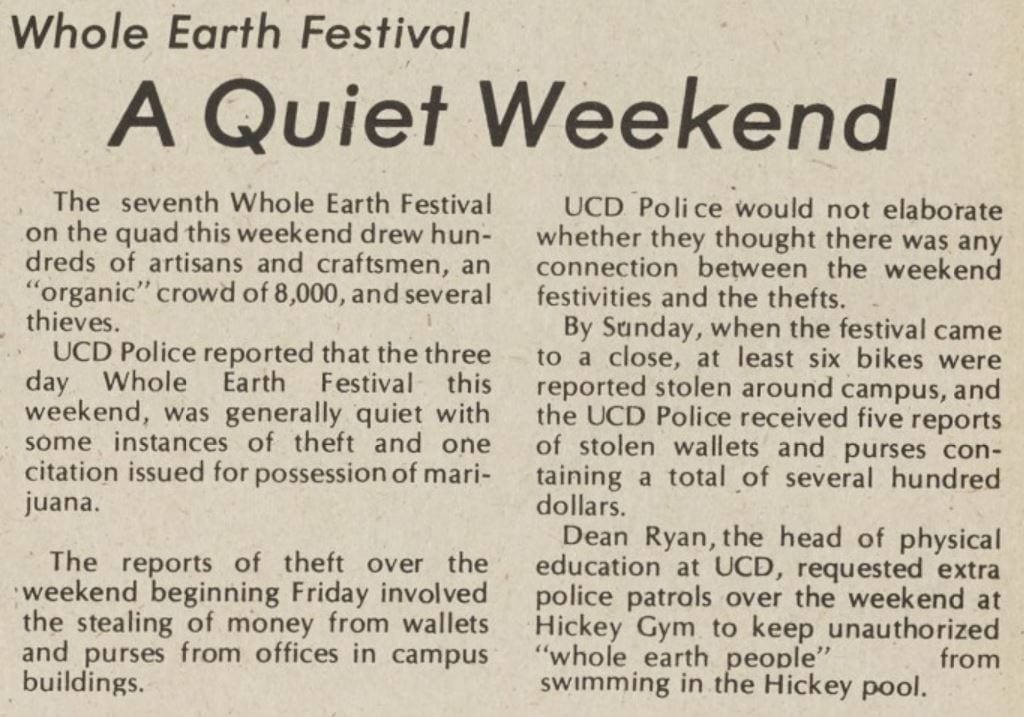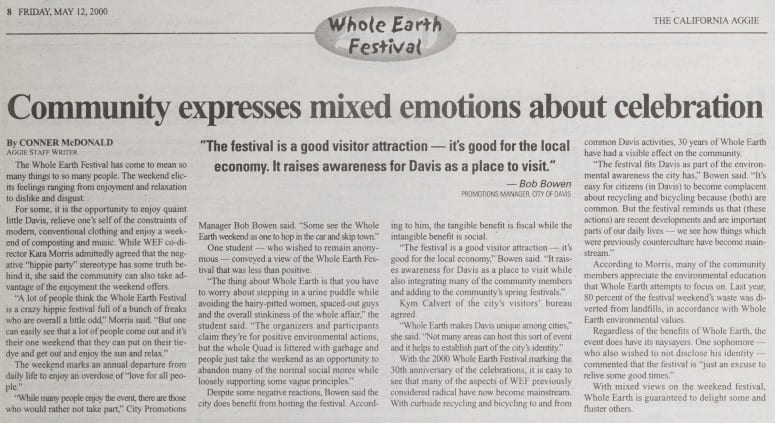1994 Whole Earth Festival poster (Archives and Special Collections/UC Davis Library)
Whole Earth Festival in a Whole New Light
This time of year — Mother’s Day, and what would have been the Whole Earth Festival, were we not sheltering in place — always reminds me of my mom.
My mom started attending the Whole Earth Festival in 1976, just a few years after it began. She always loved going and would take the time to drive from our foothill town, about an hour and a half from Davis, each year without fail. Little did I know that one day I would end up studying at UC Davis, in a roundabout way after transferring from an out-of-state college.
She described attending the Whole Earth Festival as “the welcoming experience of merging into hippie culture” — just as one would imagine a music festival in 1976 would be.
“It was full of music and creativity and I left every year with a couple of lifelong friends,” she said. “It was such a musical and social highlight that I ended up attending year after year.”
This year the Whole Earth Festival, which was scheduled to begin today, will not be taking place due to the ongoing COVID-19 pandemic. I dug through The Aggie archives to learn a little more about the iconic Davis festival.
Whole Earth: The Early Days
The evolution of the week-long “Earth Week” celebration to the Whole Earth Festival is well documented in The California Aggie, UC Davis’ campus newspaper.

From The California Aggie, March 4, 1970 (click to read the full article in the online Aggie archive)
In 1970, the event was inspired by a talk given by John McConnell, the founder of international Earth Day and prominent peace activist, at the Unitarian Church of San Francisco. As he revealed his idea for a dedicated week celebrating the earth and spirituality, a staff member of the ASUCD Experimental College happened to be in attendance. The idea found its way to Davis and became “Earth Week” — a celebration of spirituality, nature, art and music.
In 1975, the dates of the festival were shortened and it was renamed the “Whole Earth Festival,” and deemed the community’s “celebration of Spring.” By 1980, the festival had become so popular that vendors had to audition for a spot to sell their crafts.
The Festival Becomes Controversial
While Whole Earth was popular in its early days, and is again now, that wasn’t always the case — at least among certain segments of the Davis community. In 1973 The Aggie hardly covered the festival and was scolded by a reader who wrote in disappointment about the lack of attention given to the event.
Other stories in The Aggie described the event as the “annual hippie party,” talking about the arrests and influx of people coming to Davis to celebrate environmentalism while leaving behind garbage.
Today the festival is once again as popular as ever — with students looking forward to the springtime celebratory progression from Picnic Day, to the Whole Earth Festival, to graduation.
Looking Forward, Looking Back
This year, Mother’s Day weekend will be different. I, like many, am spending this spring socially distanced from loved ones. Nevertheless, we can celebrate the spirit of the Whole Earth Festival through past pictures and newspaper stories—exploring its history and looking forward to next year when we are able to celebrate this beloved springtime tradition together again.
Fiona Micoleau is a senior at UC Davis majoring in communications and professional writing, and a student employee of the UC Davis Library. She transferred from the University of Oregon as a junior in 2018.
From the Archive:
Click any of the clips below to read the full story in The Aggie Archive.

Letter to the editor published in The California Aggie, May 8, 1973

From The California Aggie, May 10, 1976

From The California Aggie, May 12, 2000